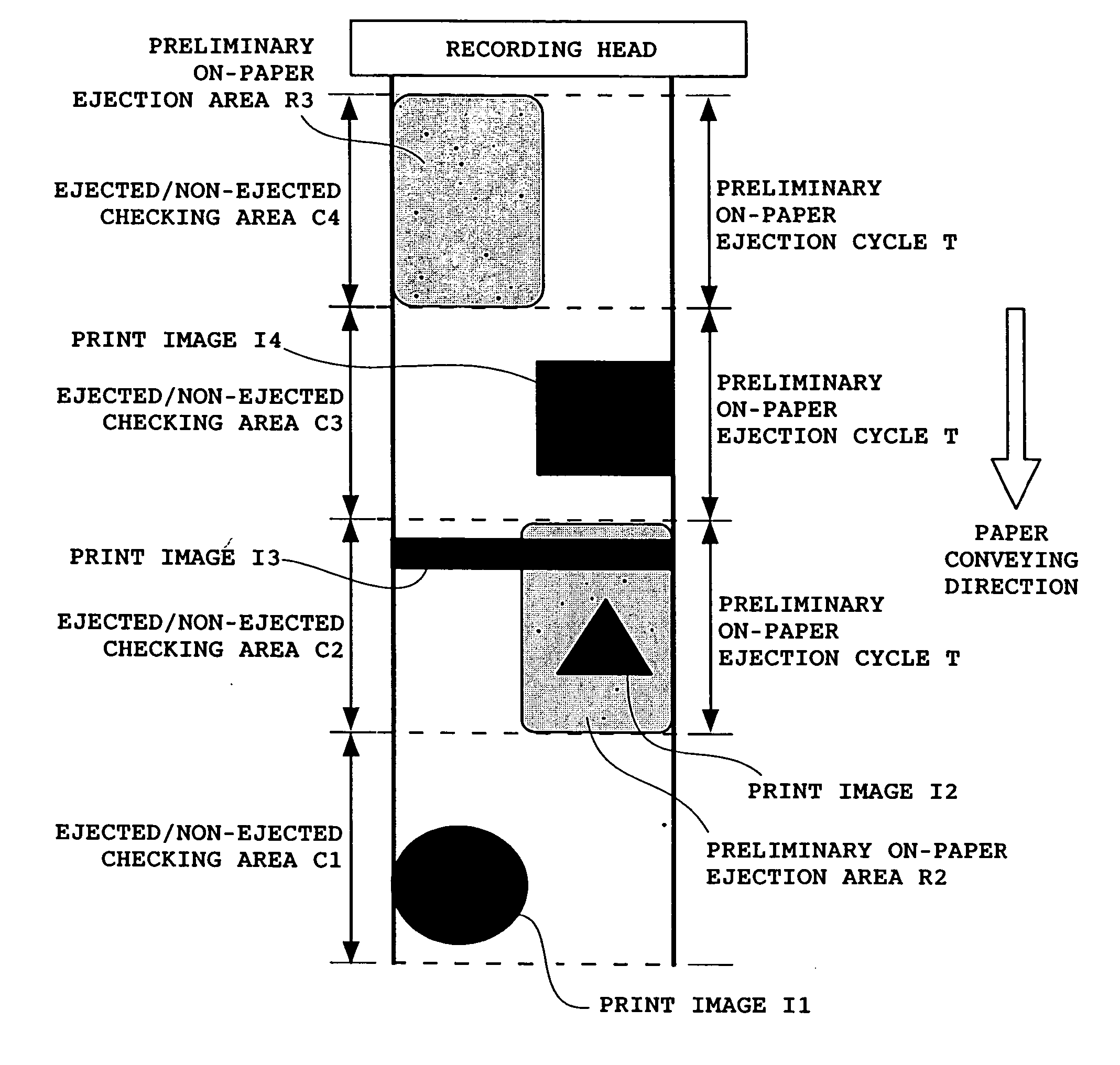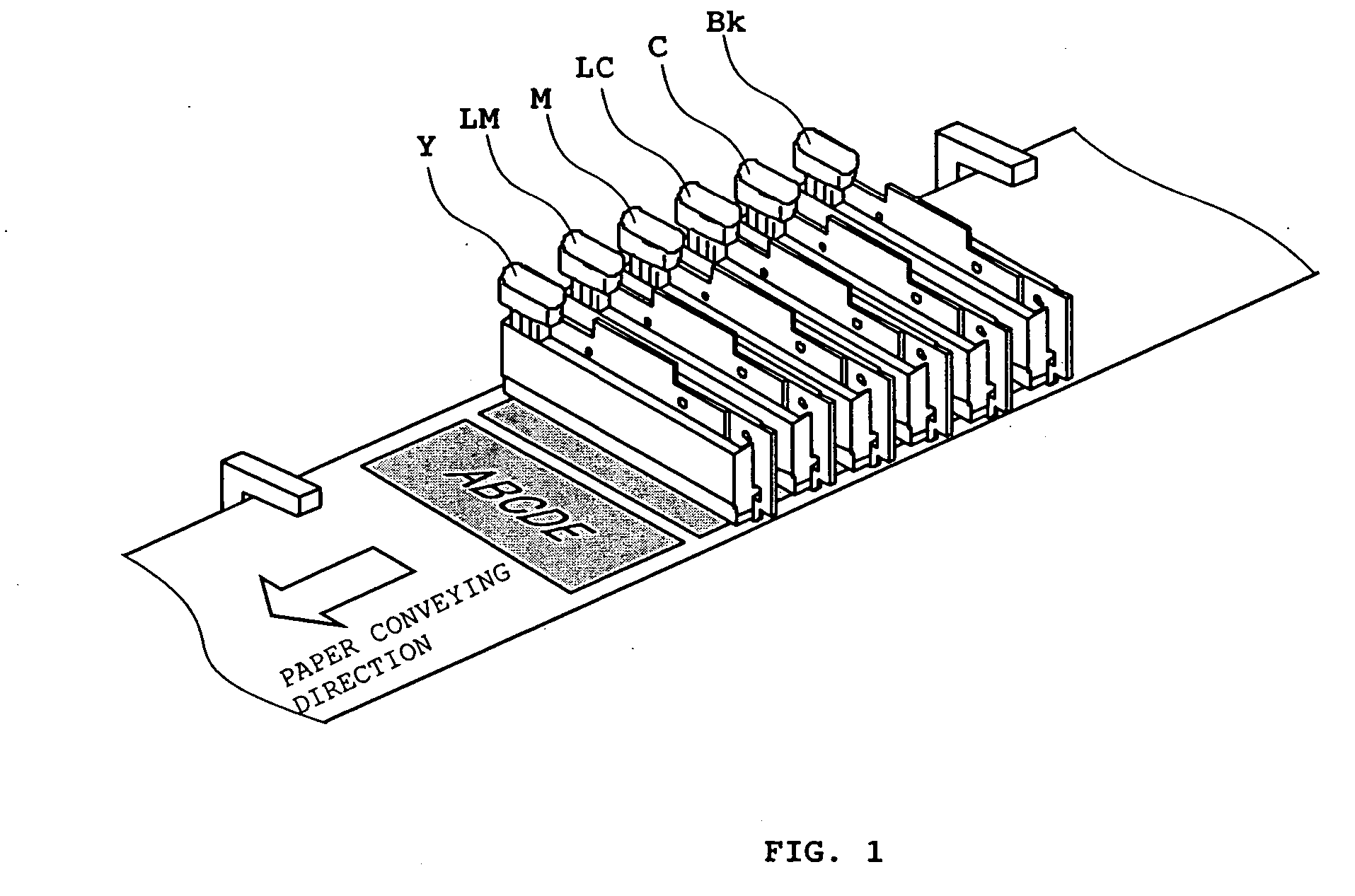Ink jet recording method, recording apparatus, and recorded object
- Summary
- Abstract
- Description
- Claims
- Application Information
AI Technical Summary
Benefits of technology
Problems solved by technology
Method used
Image
Examples
Embodiment Construction
[0065] Hereinafter, preferred embodiments of the present invention will be explained in detail by way of example, with reference to the accompanying drawings. It is not intended that relative positions of constitutional elements, formulas, numerical values, and the like, as described in this embodiment will not limit the scope of the present invention, unless otherwise specified.
[0066]FIG. 1 is a perspective view to schematically explain an array of ink jet recording heads according to a preferred embodiment of the present invention.
[0067] The recording head as a recording means in the preferred embodiment are formed by arranging a plurality of line heads of long-length type in parallel, each linearly placing a plurality of recording elements, being orthogonal to a direction into which a paper sheet is conveyed. In the example as shown in FIG. 1, the plurality of line heads are respectively provided with six recording heads Bk, C, LC, M, LM, and Y which perform recording by ejecti...
PUM
 Login to View More
Login to View More Abstract
Description
Claims
Application Information
 Login to View More
Login to View More - R&D
- Intellectual Property
- Life Sciences
- Materials
- Tech Scout
- Unparalleled Data Quality
- Higher Quality Content
- 60% Fewer Hallucinations
Browse by: Latest US Patents, China's latest patents, Technical Efficacy Thesaurus, Application Domain, Technology Topic, Popular Technical Reports.
© 2025 PatSnap. All rights reserved.Legal|Privacy policy|Modern Slavery Act Transparency Statement|Sitemap|About US| Contact US: help@patsnap.com



